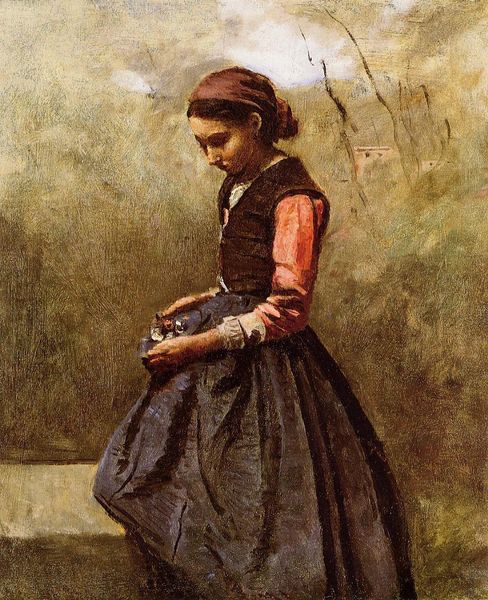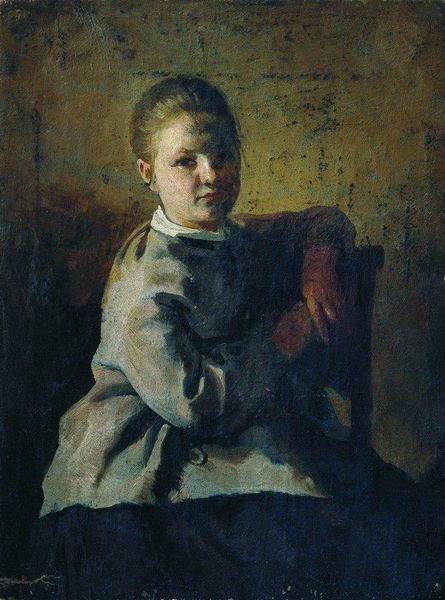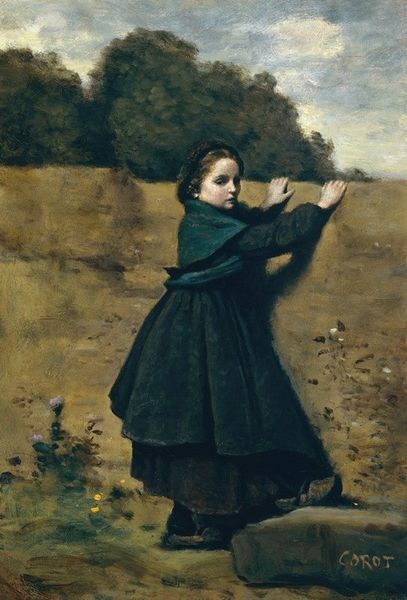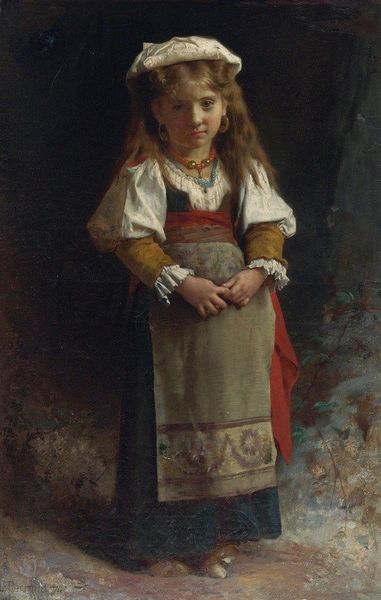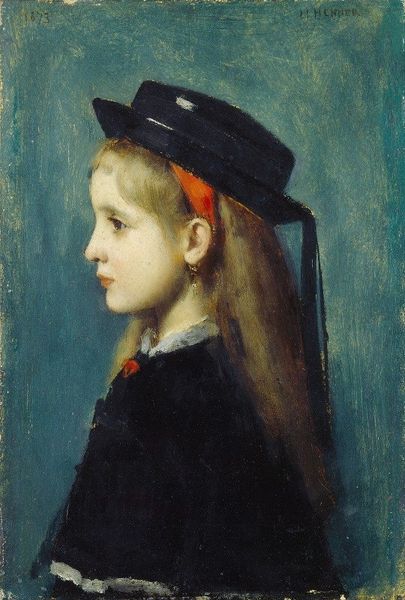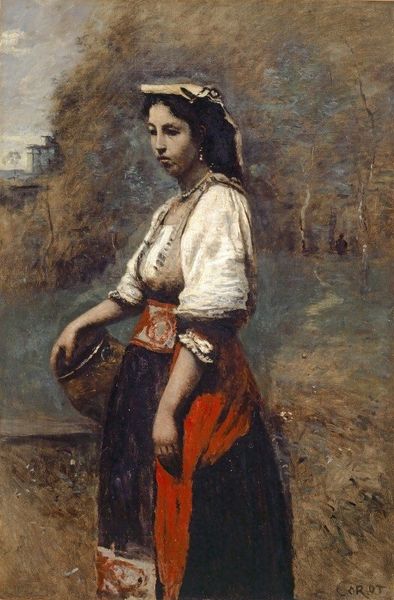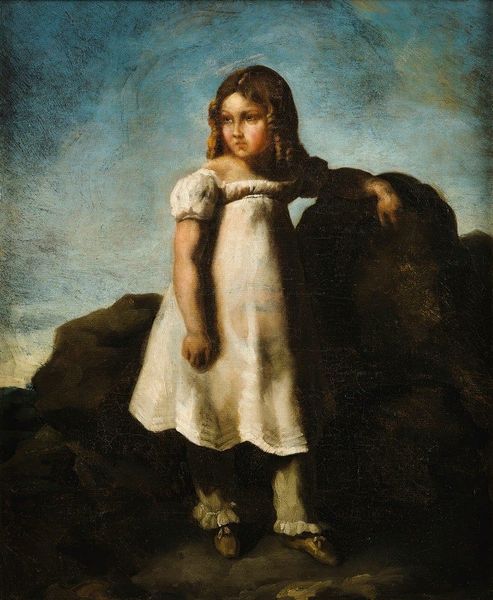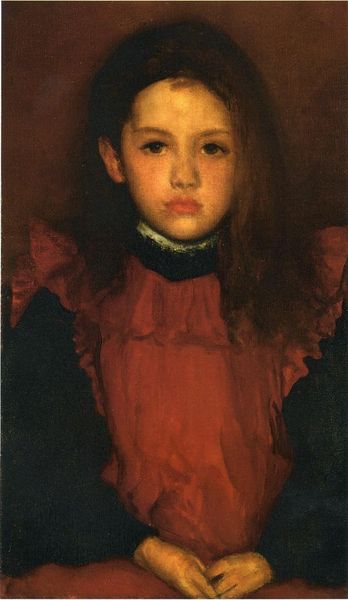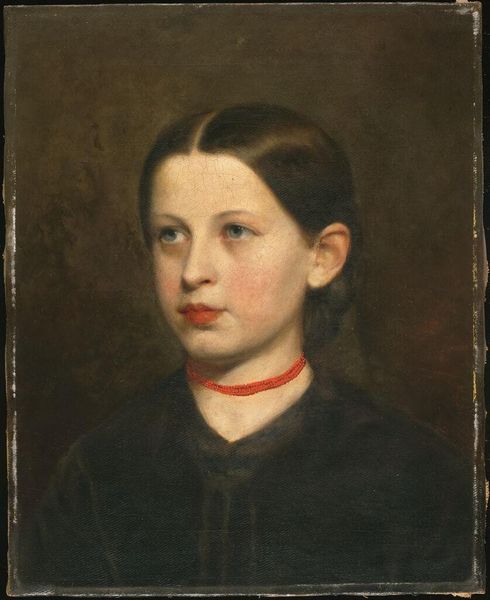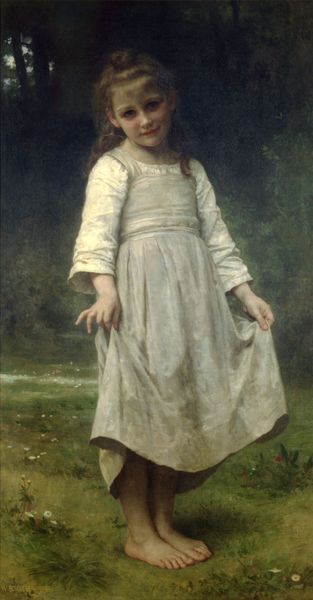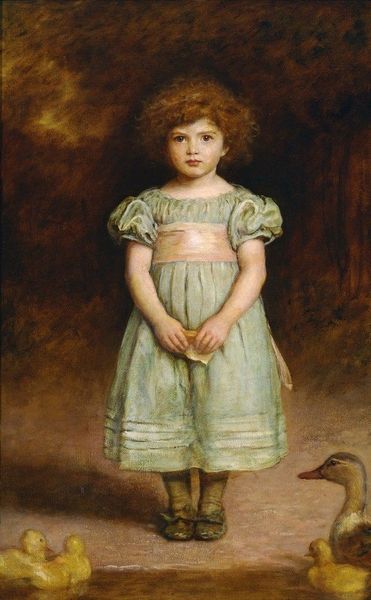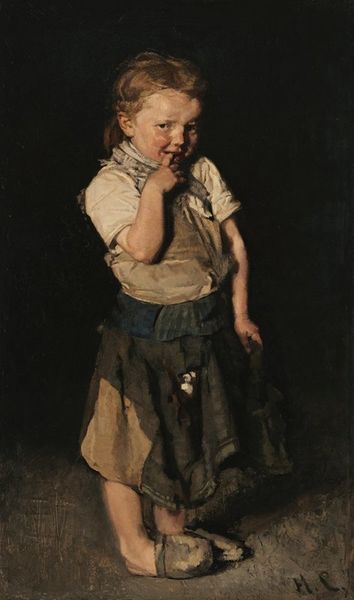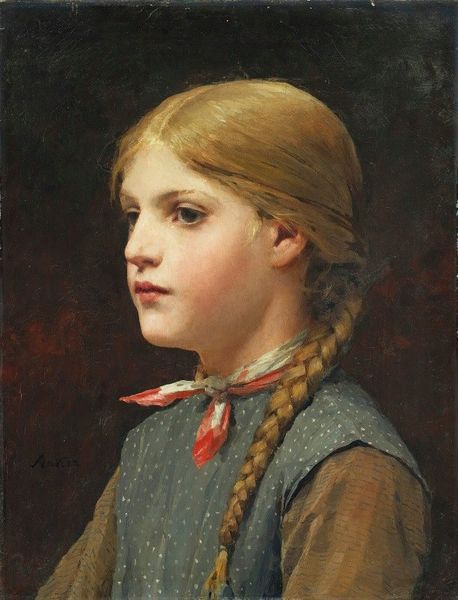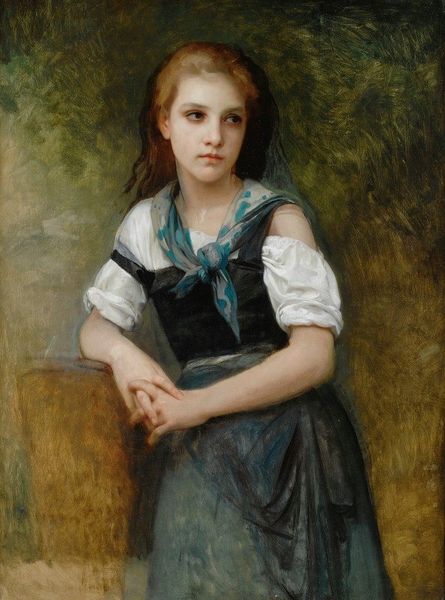
painting, plein-air, oil-paint
#
portrait
#
figurative
#
painting
#
plein-air
#
oil-paint
#
oil painting
#
romanticism
#
genre-painting
#
portrait art
Copyright: Public Domain: Artvee
Curator: There's something so hauntingly simple about Corot's "La Petite Pie." I am immediately struck by how gentle yet determined she appears; is she a child playing dress-up, or an old soul already weary of the world? Editor: As the historian, I must say, what always interests me about Corot's work is how it navigates the space between romantic idealism and the burgeoning Realist movement of his time. He's painting this young girl, seemingly of the working class, but does so with an air of sweetness. Curator: Yes, sweet, but not cloying. There’s a definite melancholy woven into the texture of the oil paint itself. I feel this especially around her eyes—they suggest someone caught between the freedom of childhood and the constraints of society. The hazy atmosphere certainly contributes, wouldn’t you say? Almost like a dream fading into reality. Editor: Precisely! The 'plein-air' style adds authenticity, connecting her to a specific time and place—presumably, a rural setting removed from the bustling art world. But how does the public consume such a portrait? Is it empathy, patronage, or something else entirely? Curator: I feel that her gaze implicates the viewer. She is there, uncomfortably close; Corot is not interested in objectifying her, so he creates space to invite contemplation. Her cane and dark attire are peculiar too. They feel symbolic. Editor: Indeed, and that's where we see the potential tensions between lived experience and pictorial representation come to the fore. We can admire Corot’s artistic intention to paint a realistic scene. However, one should acknowledge that "reality" here is being constructed and filtered. Curator: Right! What is the narrative this painting creates? A Romantic daydream? A political declaration? Editor: Well, whatever the intentions or results, "La Petite Pie" surely speaks to a complicated visual politics around the way women and working-class individuals are depicted on canvas. Curator: She invites endless questions, proving the most compelling artworks remain wonderfully open-ended. Editor: So true—a constant dialogue.
Comments
No comments
Be the first to comment and join the conversation on the ultimate creative platform.
